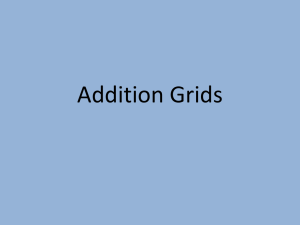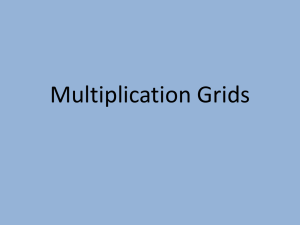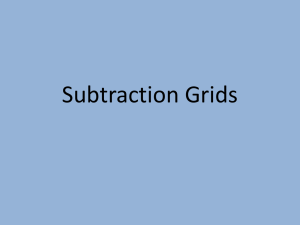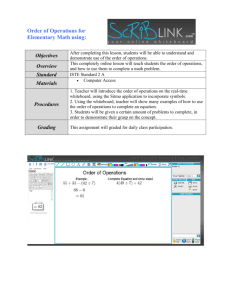Length - Scoilnet
advertisement
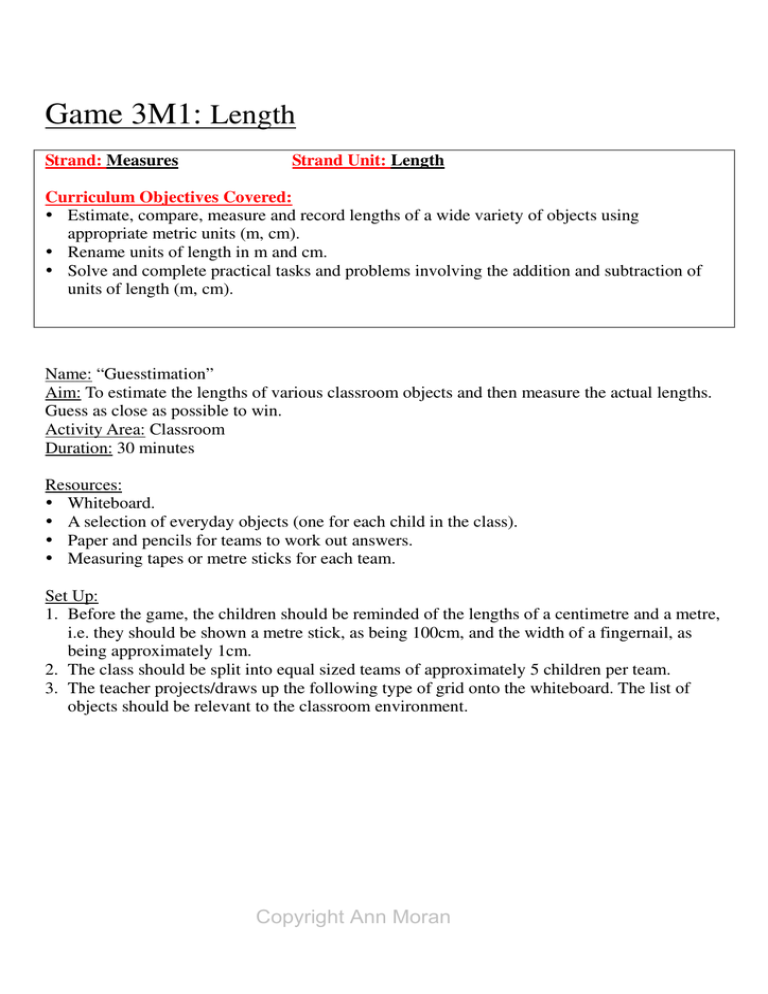
Game 3M1: Length Strand: Measures Strand Unit: Length Curriculum Objectives Covered: Estimate, compare, measure and record lengths of a wide variety of objects using appropriate metric units (m, cm). Rename units of length in m and cm. Solve and complete practical tasks and problems involving the addition and subtraction of units of length (m, cm). Name: “Guesstimation” Aim: To estimate the lengths of various classroom objects and then measure the actual lengths. Guess as close as possible to win. Activity Area: Classroom Duration: 30 minutes Resources: Whiteboard. A selection of everyday objects (one for each child in the class). Paper and pencils for teams to work out answers. Measuring tapes or metre sticks for each team. Set Up: 1. Before the game, the children should be reminded of the lengths of a centimetre and a metre, i.e. they should be shown a metre stick, as being 100cm, and the width of a fingernail, as being approximately 1cm. 2. The class should be split into equal sized teams of approximately 5 children per team. 3. The teacher projects/draws up the following type of grid onto the whiteboard. The list of objects should be relevant to the classroom environment. Copyright Ann Moran Objects Example: Length of desk Estimate (in cms) Rename estimate (in ms and cms) Actual length Difference 90 cm 0m 90cm 110cm 20cm Width of chair seat Height of door Height of teacher Length of classroom Length of maths book Width of maths book Length of whiteboard Width of door Height of chair Height of desk Width of desk Length of door handle Length of window Height of window Length of history book Width of history book Height of milk carton Length of straw Length of duster Length of teacher’s arm Width of sink Height of sink Length of poster Width of poster Copyright Ann Moran Start Playing: 1. Each team is allocated 5 objects from the list (or an amount equal to the number of players in the team). 2. Each team must come up with measurement estimates for their 5 objects. Although teams can confer, the players on each team should be responsible for estimating the length of 1 object each. It should be explained to the children that the winning team will be the team that estimates most accurately. 3. When the children are happy with their estimates, they should write them up on the whiteboard in the appropriate space on the grid. 4. Each child should also rename the unit of length in the adjacent space e.g. 125cm = 1m 25cm. 5. The teams now go around the classroom using the metre sticks or measuring tapes to measure the objects accurately. 6. As before, the measurements are then filled in on the grid on the whiteboard, with the teacher checking to make sure the measurement is accurate each time, and working with the children where necessary. 7. The children then go back to their teams. 8. Using the paper and pencils, each child must work out the difference between the estimate and the actual length of his/her object, by taking the smaller measurement from the bigger measurement. 9. The child then writes up his/her answer into the classroom grid. 10. When all of the answers are written up in the ‘Difference’ column, the teacher goes through the answers on the whiteboard to ensure that they are correct. 11. The teacher explains that the smaller the difference, the closer that person was to guessing the actual length of his/her object. 12. Finally, the measurements in the ‘Difference’ column for the 5 objects of each team are added together. 13. The winning team is the team with the smallest answer i.e. the smallest combined difference between the estimates and the measurements of their allocated objects. Copyright Ann Moran
